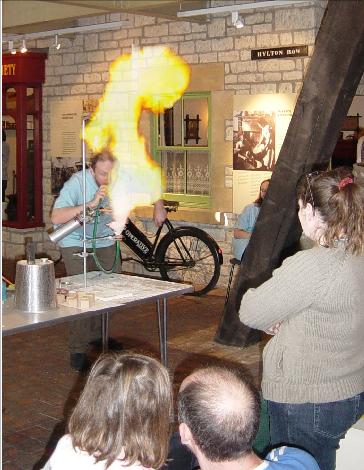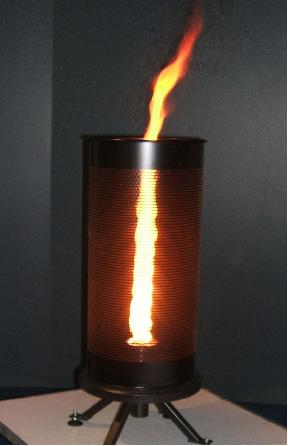 |
|
|
The Fire Show |
|
 |
||||
 |
||||
|
The Fire Show is relevant to the Science curriculum at KS 1, KS2 and KS3, and also to Citizenship and History. The Fire Show will answer all your burning questions about fire. It starts by considering what happens when something burns, by collecting the products of combustion from a candle flame. We then move on to look at the range of things that will burn, from metals to custard powder, and think about why all foodstuffs will burn. Then we look at different ways of lighting a fire, from tinderboxes to fire pistons before considering how fire can be controlled, and used to provide power. The show finishes with a spectacular but safe demonstration of a swirling pillar of flame. This show uses naked flames and inflammable and explosive materials. Because of the nature of the experiments there are no opportunities for audience participation - I don't want to send my helpers home singed! Key Concepts: Fire is the name we give to the process of combustion. Combustion is a chemical reaction, in which fuel and oxygen are combined to produce new substances, and liberate heat energy. Chemical reactions involve rearranging the atoms that make up molecules to make different molecules. The rate at which things burn depends in part on their shape and size - very small particles of fuel will burn so rapidly that they are explosive. The process of oxidisation is chemically the same as burning so things like metals which react slowly with oxygen at room temperature will burn under the right circumstances. All foodstuffs will, in principle, burn - the process of respiration by which organisms get the energy to sustain life is chemically similar to burning. Fire requires fuel, oxygen and heat to sustain it - a fire can be put out by removing any one of these three things. There are many ways in which fire may be started, including friction, electricity and compression of air. The heat energy liberated by burning fuel can be used to do useful work both in engines of various kinds and in other devices such as hot-air balloons. Please note that this show involves naked flames and hot objects. Full risk assessment and safety information will be provided when you book. USE YOUR BROWSER'S 'BACK' BUTTON TO RETURN TO THE PREVIOUS PAGE
|
|